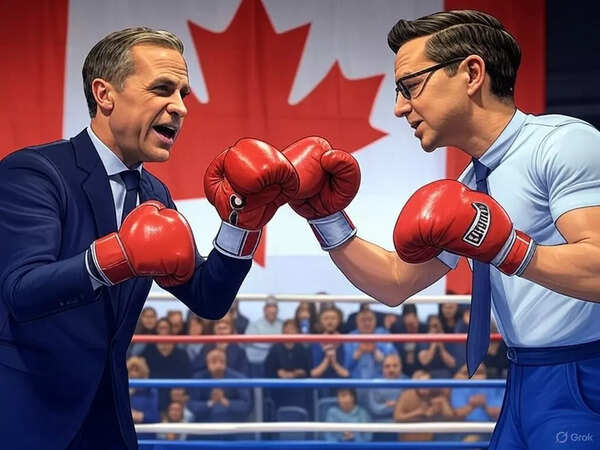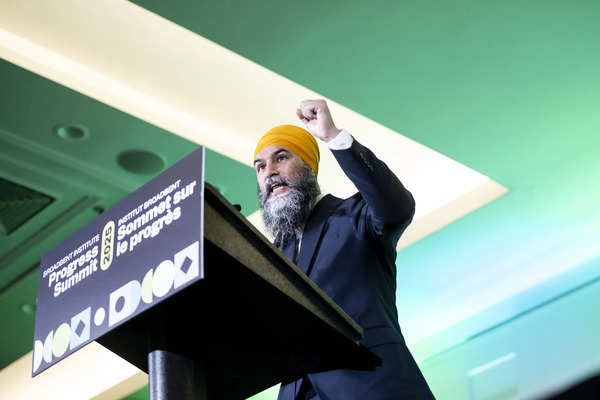Canada Federal Election 2025: An early Guide | world News

Canada is the head of elections for a federal election on April 28, 2025, which can re -shape the political scenario of the country. For those new people for Canadian politics – or just looking for a refresher – this is your crash course. How this system works on who the major players are and what is at stake, here you need to know about the Canadian election, served without georgon or political spin.
System: Westminster, but make it Canadian
Canada is a parliamentary democracy and constitutional monarchy. This means that the formal head of the state is King Charles III, which represents domestic by the Governor General. The real power, however, is with the Prime Minister, who leads the government and must support the Lower Chamber of Parliament of the House of Commons, Canada.
The House of Commons currently have 343 seats (each ride, or representing the election district). Canadians do not vote directly for the Prime Minister – they vote for their local MP. The party that win the most seats usually forms a government. If they win 172 or more, it is a majority. Anything less, and it is a minority government, requiring cooperation from other parties to pass laws and avoid major votes.
While elections are usually held every four years, they can be called quickly. The same thing happened here. In March 2025, Prime Minister Mark carney The Governor General asked to dissolve the Parliament, a month later a snap triggered a snap election. Carney, who recently took over the reins of the Liberal Party, wants a fresh mandate, as Canada struggles for Canada with economic disturbance, a power crisis and increasing stress with his southern neighbor.
The Big Players: Huz Hu in Canadian Politics
Canada’s multi-party system means more than two options on the ballot. Here is the breakdown of major parties and their leaders:

Mark Carney (Liberal Party)
A former central banker replaced the politician, after Justin Trudeau stepped aside in March 2025, Carney became Prime Minister. He is taking himself in the room as an adult in the room – the front hand in a turbulent time. Liberal economic leadership, progressive social policies and climate leadership are pitching. Carney’s campaign slogan? “Strong leadership for uncertain times.”
Pierre poo (conservative Party)
Classes and populist, Polylet, has created its brand on railing against high taxes, inflation and liberal aristocracy. He has promised “Tax axing ax” (referring to carbon tax), fixing the housing crisis and cutting government waste. The goal of a former minister, a former minister, under Stephen Harper, is finally aimed at bringing conservatives to power after almost a decade.
Jagmeet Singh (NDP)

Canada NDP leader Jagamet Singh commented at the 2025 Pragati Summit of Broadbant Institute during an expedition stop on Ottawa, Canada, Friday, April 11, 2025. (Canadian press through Christopher Catsarov/AP)
The cool on Tiktok and heavy on the policy leads the Left New Democrats. He is promising a money tax, universal pharmacore, affordable housing and extended dental care. Singh played the role of a kingmaker through a deal with liberals in the final parliament – now he wants to stand out on his own.
Yways-French Blanchet (Block Qubeois)
Blanchet blocks the block cubcois, a Quebec-Cowl party focused on defending provincial interests and cultural autonomy. Although they cannot form a federal government, they can affect one – especially in the minority scenario.
Elizabeth May (Green Party)
Greens Elizabeth May, has returned under his long -time leader, which are after a period of infection. Their attention: Climate change, democratic reform and social equity. May has called for a “Green New Deal”, but with only two MPs in the final Parliament, they remain a small voice.
Maxim Bernier (People’s Party)
PPC is a right -wing populist party led by former Cabinet Cabinet Minister Maxim Bernier. However, seatless, PPC has engraved a niche railing against vaccines, immigration and carbon tax. Their presence can divide the right -wing vote into major riders.
Issues: Does voters care in 2025
1. Living and cost of life
Food prices, rent, mortgage rates – everything has increased. Conservatives blame “justinflation” and promise tax deduction and regulatory reforms. Liberals postponed child care deal, housing programs and carbon discounts. NDP blames corporate greed and wants to wind on grocery chains. This is the economy, again.
2. American stress and national sovereignty
Donald Trump’s return to the White House has led to a fully developed trade war with Canada. Canadian Steel, Lumber and Dairy have returned tariffs, and Trump has made bizarre comments about Canada becoming a “51st state”. All major parties have condemned the comments. Carney wants a fresh mandate to take a new diplomatic line. Polyvine accused the liberalists of sleep in the economic war. Expect this issue to dominate the debate.
3. Healthcare and Pharmacore
Canada’s universal healthcare system is under stress. Liberals are promising national pharmackers. NDP says, “About time!” And want it to be done tomorrow. Conservatives say that better management, not much expense, is the key. Dental care and alder care are also hot topics.
4. Climate change and energy
Liberals support carbon pricing, clean technical investment and gradual infections. Conservatives oppose carbon tax and favor pipelines and natural gas exports. Greens and NDP want to ban new fossil fuel projects and redirect subsidies. This is a conflict between economic practicality and environmental urgency.
5. Accommodation
The cities of Canada are rapidly ineffective. Orthodox “promises to build houses, not bureaucracy.” Liberal housing is offering accelerator and encouragement. NDP supports public housing. Everyone agrees that there is a crisis – no one agrees on treatment.
How voting works: First-Pas-Post
Canada uses the first-pass-the-post system. Voters choose a candidate in their local ride. Candidates with most votes – whether it is 30% or 70%. This is simple but often criticized to distort national results. A party can win more seats with less overall votes if they are supported. In this way, liberals remained in power in 2019 and 2021 despite losing popular votes.
343 riding Canadian riding each MP. The leader of the most seat party is usually invited by the Governor General to form the government. Most governments are powerful and stable; Minorities must have a constant conversation to survive.
Poll: Very close to call?
A tight race appears from the recent elections. In the beginning of 2025, there were stereotypes ahead. But the arrival of Mark Carney and the trade war of Trump – has left the pace. Liberals have pulled forward slightly, hovering near 45% support. Conservatives are in the high 30s. NDP has reached about 10%. The block remains strong in Quebec. Greens and PPC trail in single digits.
It is taking shape as a two-horse race. If the liberals manage to convert that voting lead into seats, Carney can win a majority. But it is still possible that we are leading to another hung parliament – where deal, compromise, and backcrooch talks decide who are the rules.
what’s at stake?
This election will determine who leads Canada through inflation, housing instability, a healthcare lack and deteriorating relationship with the United States. It is also a fight for ideas: the government as a solution as a government problem; Cooperation vs. collision; Climate leadership vs. energy security.




